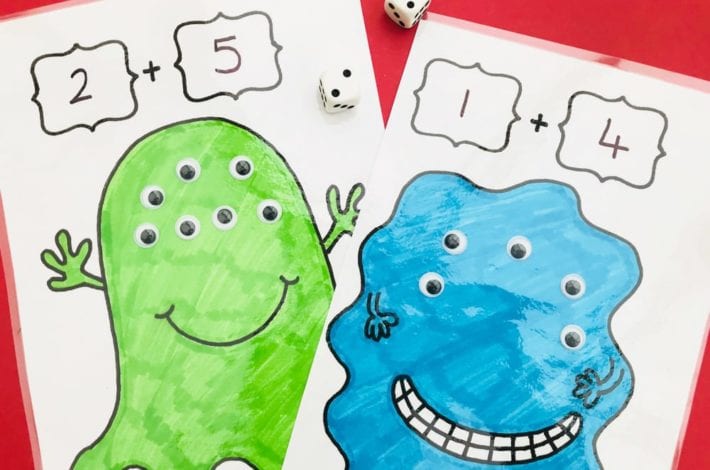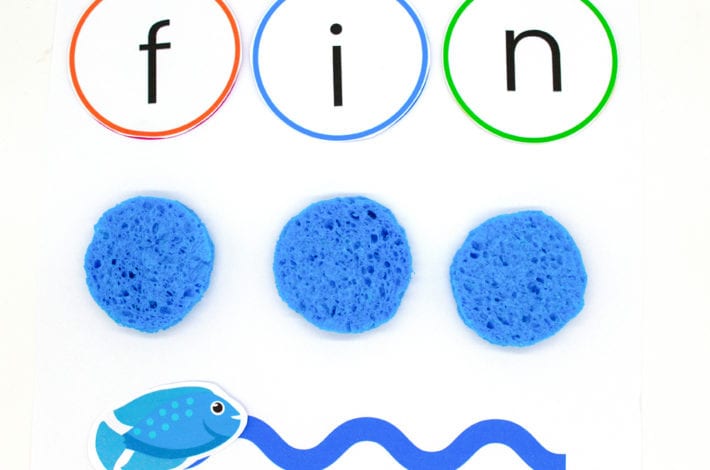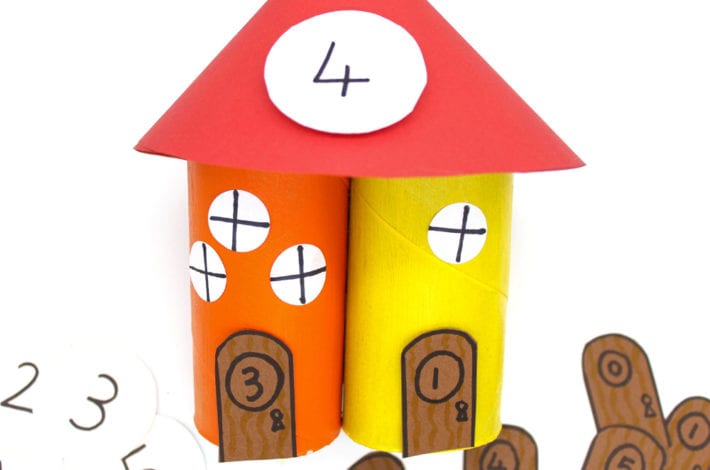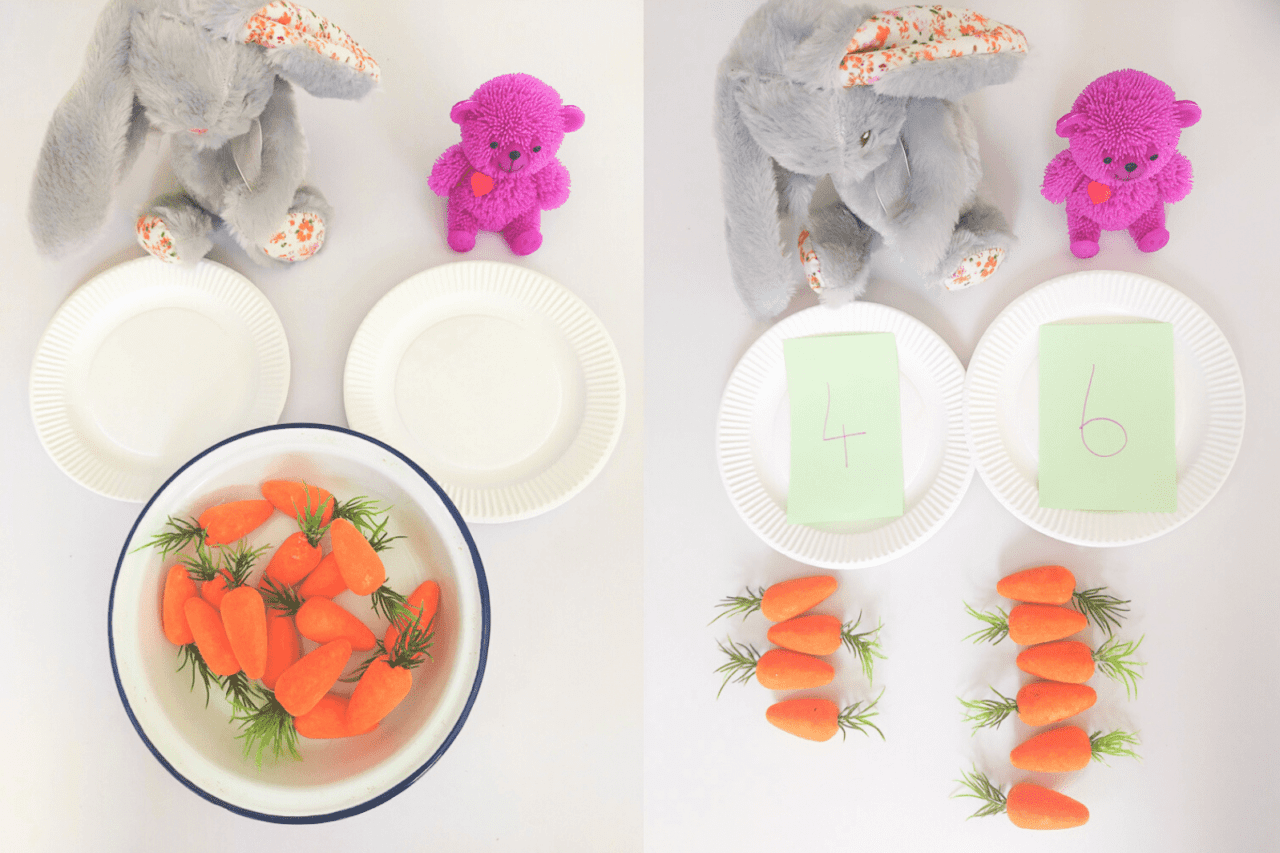

Playtime Learning
Numeracy Activities with Teddy Bears’ Picnic
With these Teddy Bears’ Picnic numeracy activities you’ll get children to think logically about simple sums.
Children find it much easier to learn when the learning is relatable and when they do it using objects that impact them in their day to day lives. By using real toys or foods, you can help your children explore concepts in a hands-on way. This makes it all easier to understand and learn.
Here you’ll play around with number bonds by sharing out the foods between the teddy bears and counting up how many of each item each bear has.
You can then move on to extended activities like sharing foods between 3 or more picnic guests, or dividing them equally between each guest.
Play with your child or with a group of children and use whatever you have in the fridge.
Summary
Time: 15 minutes
Ages: Little kids to Big Kids
Difficulty to set up: Easy peasy
Skills: Numeracy: Number bonds and First division
You will need:
Cuddly Toys – at least 2
Plates – real, plastic or paper
Objects for Sharing – whatever you can find at home: grapes, tomatoes, potatoes, cracker
Number Cards – cut paper into playing card size and write numbers and symbols on them to make your own number cards
Dice – optional
Activity 1: Counting and Adding
Learn Addition and Number Bonds
If you’re doing numeracy activities for the first time, we recommend starting with 5 objects or less and 2 characters.
Once you’ve worked through all the different ways you can share out those objects – and you feel your child is confident exploring the number 5 – you can add more objects or toys.
When your child feels comfortable sharing numbers up to 20 between 2 picnic guests, you can extend the activity. Add more guests and share the objects between them.
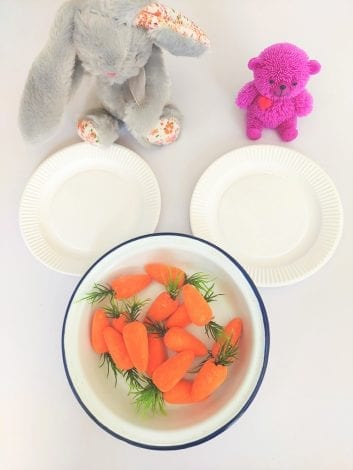

Step 1: Count out the total number of carrots
Set out cuddly toys with their plates, ready for the picnic. Place a bowl in the centre with the objects for sharing. Here we’ve used toy carrots but you can use real foods from your fridge too.
Count Out the Total
It’s really important to first count how many are in the bowl to start with.
This is your whole number. Say this number a few times as you will refer back to it quite a lot and you’ll want your child to remember it. You can write out the number card with that number on it so that it’s ready.
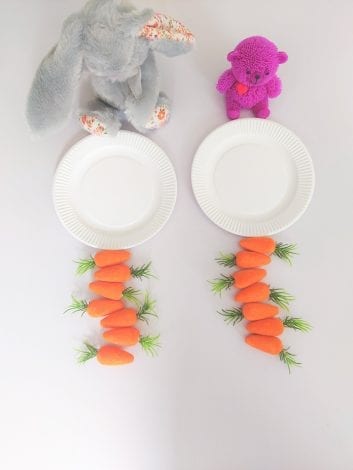

Step 2: Share out the carrots between your party guests
Once you have counted the whole number of carrots together, explain that you’re now going to split the objects between the two cuddly toys.
Let children lead this part and share out the objects however they like onto the cuddly toys’ plates until there are none left in the centre bowl.
If you prefer you can throw dice for this part. The dice will tell you how many objects to put on the first cuddly toy’s plate, and the remainder would go on the second one’s plate.
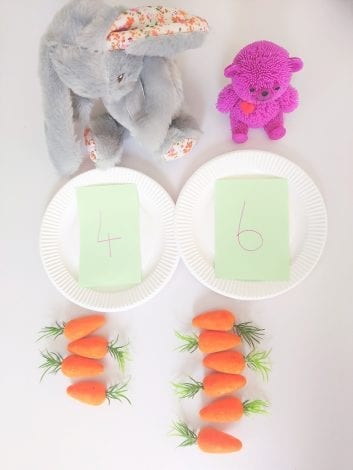

Step 3: Count out the carrots on each plate
Line up the carrots on each plate and count them out, pointing to each object. How many are in each group?
Write out that number on a card. Place the card on the corresponding plate.
Which teddy has more carrots?
To extend the learning here you can identify which group has more and which has less.
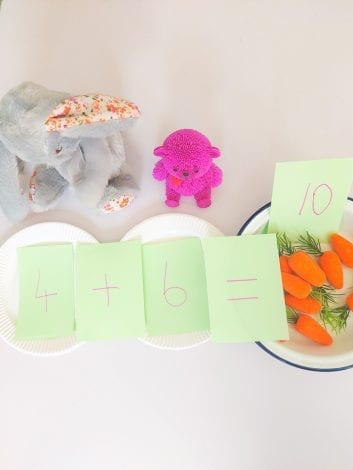

Step 4: Add symbols to complete your sum
Add symbols to create your mathematical sum. For example 4 + 6 = 10.
Count out all of the objects as you put them back into the centre bowl again. Show the total number with a number card (here it’s 10).
This bowl and its card can be placed at the end of the sum. Talk through the sum, pointing to each part, to become familiar with mathematical language, ‘add’, ‘equals’.
Explore more number bonds through sharing
Extend the learning by exploring all the different ways the objects can be shared.
For example 10 carrots can be shared as: 2 and 8, 4 and 6, 5 and 5 etc. These are the number bonds.
Write down all the different sums that you create so that you can refer back to them throughout the activity.
Extend the activity
Once your child can comfortably share 20 objects between 2 guests, and they have explored the different ways you can do this, you can add more cuddly toys.
Draw out some extra ‘addition’ symbols for this as they’ll be adding 3 or more numbers together to get their total.
Activity 2: Sharing objects equally
Learn Multiplication and Division
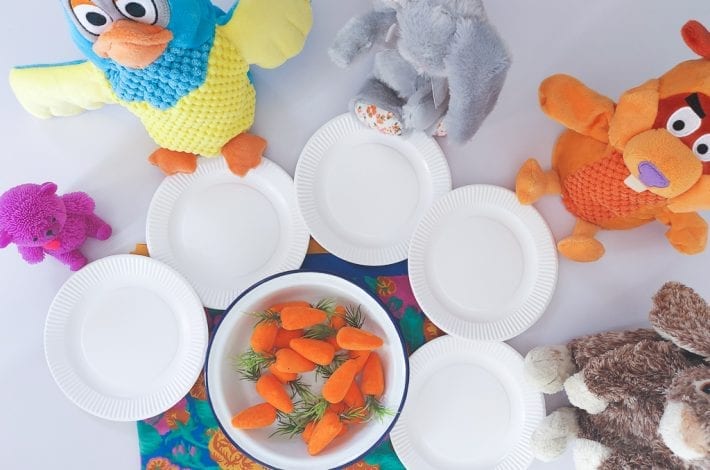

Divide the carrots equally among your picnic guests
This activity can also be used to explore sharing equally.
Before you begin, it’s important to make sure that the whole number is divisible by the number of cuddly toys with no remainder, to avoid confusion.
Say you have 10 carrots and 5 picnic guests. Share out the carrots to one guest at a time until you have no more left in the bowl.
Does everyone have the same number of carrots? They should have 2 each.
Can your child see that you have 5 sets of 2? This can also be written as 5 x 2 and is the same as: 2 + 2 + 2+ 2 +2. The whole number was 10 so the solution to 5 x 2 is 10. Can they count it out to check it’s correct?
You could also say that 10 divided by 5 guests is 2.
This Teddy Bears’ Picnic activity is great because it’s so flexible and can be adapted to suit all kinds of numeracy activities.
For example to show subtraction you could play with one teddy bear, place 5 carrots on his plate and take away 2 carrots. How many does he have left?
Hands on numeracy activities like this one help preschoolers understand the basic math concepts to adding, subtracting, multiplying and dividing.

